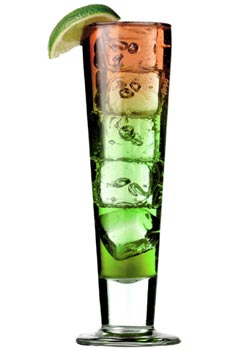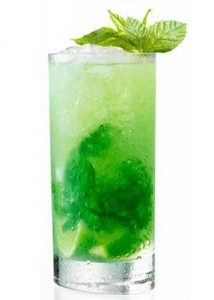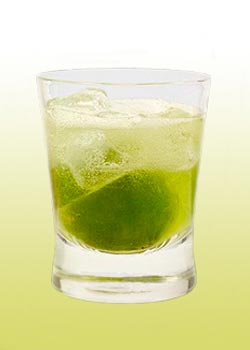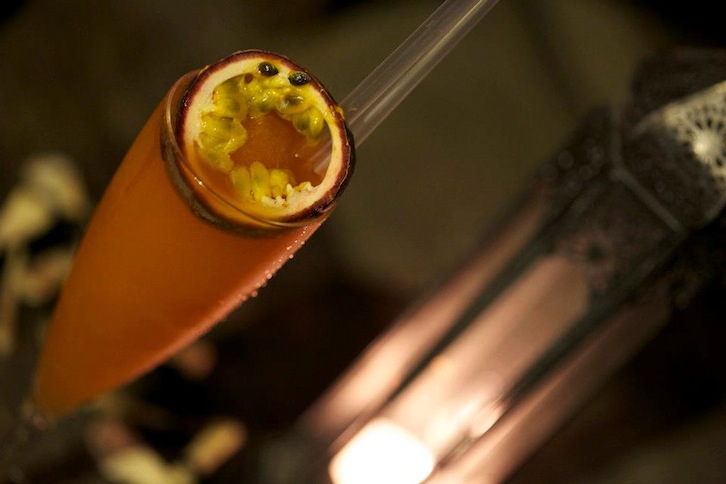Having recently returned from South America where we macerated a mouthful of coca leaves long enough to get a stomachache – and no more stimulation than a flat Pepsi, we were, admittedly a little skeptical about sampling Agwa de Bolivia Coca Leaf Liqueur. Skeptical – but also intrigued. Let’s face it, who amongst us doesn’t dream of our own Al “Scarface” Pacino moment with our faces blanketed in…coca leaves?
Not unlike the recent resurgence of another green liqueur, the formerly-outlawed absinthe, Agwa de Bolivia Coca Leaf Liqueur is treading on edgy ice with the production of the world’s first liqueur made from Bolivian coca leaves. Wisely, the company has chosen to peddle their elixir by focusing on indigenous South American traditions (rather than the cowboys who created Miami…). Nonetheless, their cheeky ads come with a yellow WARNING label, stating that the product is “Made From Only the Finest Bolivian Coca Leaves.” We get the point.
A natural botanical liqueur, Agwa de Bolivia Coca Leaf Liqueur is 100% natural – and made in Amsterdam. Now, there’s the kicker. Think about it: Bolivian coca leaf liqueur made in Amsterdam – just what kind of subliminal message is that sending? Whatever, we’re there.
Apparently, the wild Bolivian coca leaves are handpicked in the Andes, where coca leaf chewing is something of a national pastime – and not only because coca leaves satisfy the Bolivian dietary allowance for calcium. Seriously. You can’t make this stuff up.
Handpicked at more than a mile above sea level (maybe that’s where we needed to chew those coca leaves – rather than in the back of a van…), the coca leaves are then formed into 2,000-kilo bales (which, incidentally, is about 4,500 pounds – we’re just saying…).
And then – get this – those 2,000-kilo bales are shipped under armed guard to Amsterdam. Now, when was the last time you could say that about your vodka-tonic?
Once in Amsterdam, those 2,000-kilo bales are macerated – and “de-cocainized” (we know; we’ve never heard of the word either, but again, we’re intrigued. Like, for example, what happens to all that “de-cocaine” – in Amsterdam?).
Agwa de Bolivia Coca Leaf Liqueur is sold at 60 proof, with a number of recipes already appearing on their website. One of the easiest ways to enjoy Agwa de Bolivia Coca Leaf Liqueur is similar to tequila: shoot it with a lime. The Agwa folks call it “Bolivian Kiss,” contending that lime changes the pH in the mouth, which activates the coca leaf alkaloids, which give you an oxygen buzz.
Oh, and there’s also this: according to legend, God said to the Andean people, “Watch the coca leaves dance with the wind and you will find answers to your queries.”
As for us, we’ll probably sip this herbaceous elixir on the rocks, with a splash of lime juice – and contemplate the history of snow.

AGWA Berry Kiss (Source: AGWA)
AGWA Berry Kiss
Ingredients: 1.5 oz. AGWA de Bolivia Coca Leaf Liqueur / 5 oz. chilled Prosecco / fresh lime juice / fresh blackberries and raspberries
Preparation: Combine AGWA, lime juice and chilled Prosecco and shake, garnish with fresh blackberries and raspberries

AGWA Bolivian Mojito (Source: AGWA)
Bolivian Mojito
Ingredients: 1.5 oz. AGWA, 12 spearmint leaves, 1/2 lime, 7 oz. club soda, 2 tsp. sugar
Preparation: In a large glass, gently crush mint leaves. Then, squeeze lime juice over crushed leaves. Add sugar and ice. Afterwards, add AGWA and club soda. Stir drink well. Garnish with a lime wedge and tiny pieces of mint leaves.

AGWA Fresca (Source: AGWA
AGWA Fresca
Ingredients: AGWA, lime, soda water
Preparation: AGWA topped with soda water and crushed lime, on the rocks
PRICE: $35.00 / 750 mL
LINK: Agwa de Bolivia Coca Leaf Liqueur


























